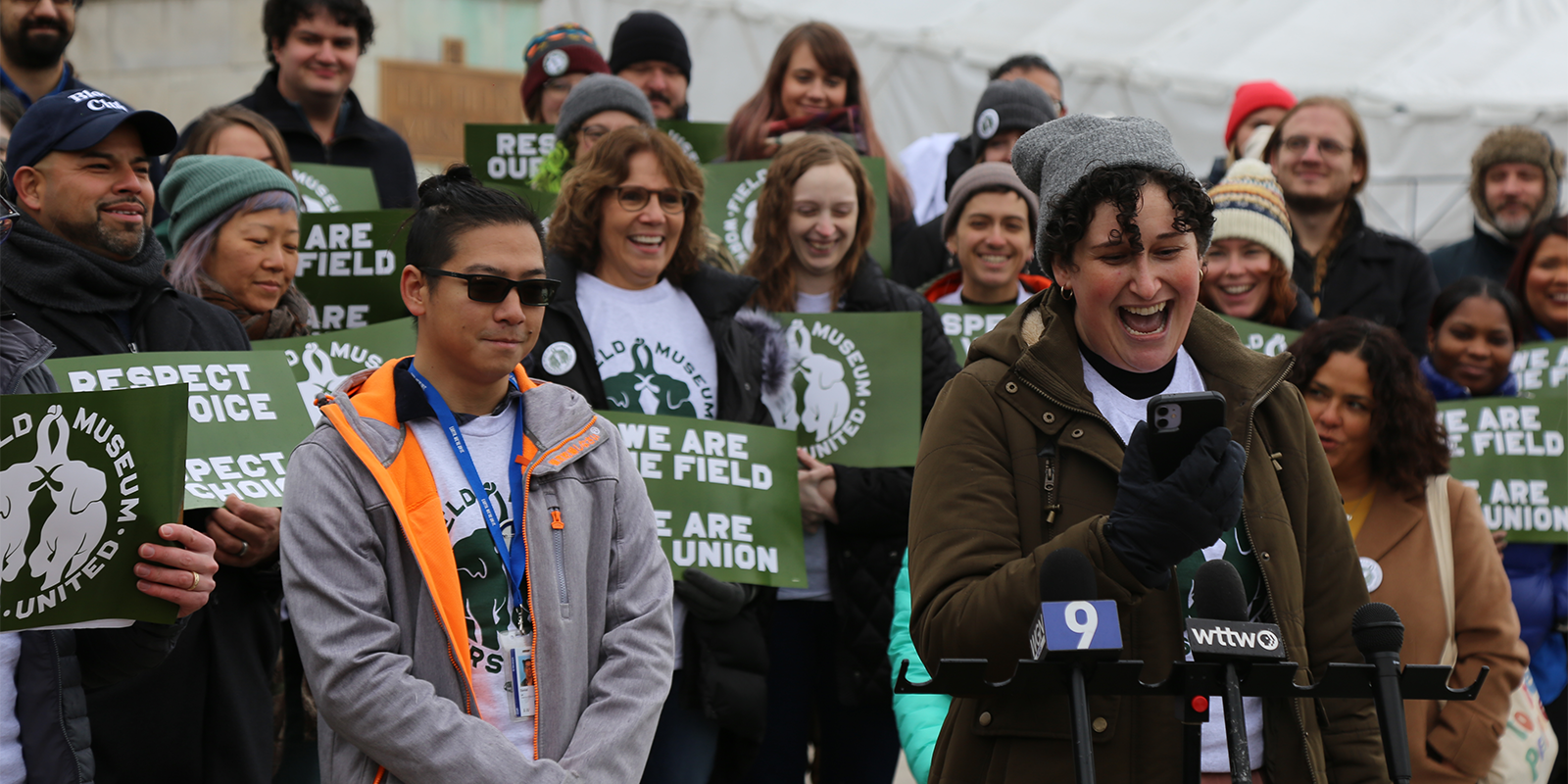CHICAGO – Nearly 300 employees of the Field Museum of Natural History have won their union with AFSCME Council 31.
Votes were counted on March 9 in a union election administered in February by the National Labor Relations Board.
An overwhelming majority of workers at the Field voted “yes” to form their union.
“We’re thrilled that our co-workers have decisively said yes to our union, Field Museum Workers United/AFSCME,” the organizing committee wrote in announcing the news. “We also voted to form one bargaining unit for all Field Museum titles, because we know that we’re stronger together.”
The workers’ overwhelming win comes despite an aggressive and costly anti-union campaign by museum management that tried to convince them to vote “no.”
In the coming weeks, the new union members will begin the process of preparing to bargain their first union contract, including electing a bargaining committee to represent them in negotiations and distributing a bargaining survey so everyone can share the issues that matter to them.
“In Chicago and nationwide, cultural workers are organizing to claim their seat at the table, improve their institutions, and win fair compensation and respect,” AFSCME Council 31 Executive Director Roberta Lynch said. “AFSCME is proud to be at the forefront of this movement for change.”
The Field Museum is the third major Chicago cultural institution where workers have chosen to unionize in recent months. Workers at the Art Institute of Chicago and the School of Art Institute of Chicago, made history last year by voting overwhelmingly to join together and form their union as the Art Institute of Chicago Workers United (Council 31).
From the Philadelphia Museum of Art Union’s historic contract ratification to the Baltimore Museum of Art Union winning their union election by a landslide in July, there has been no shortage in union victories among museum workers nationwide. Cultural Workers United – AFSCME is the premier organizing campaign that is showing workers at museums, libraries, zoos and other cultural institutions how to build power.
